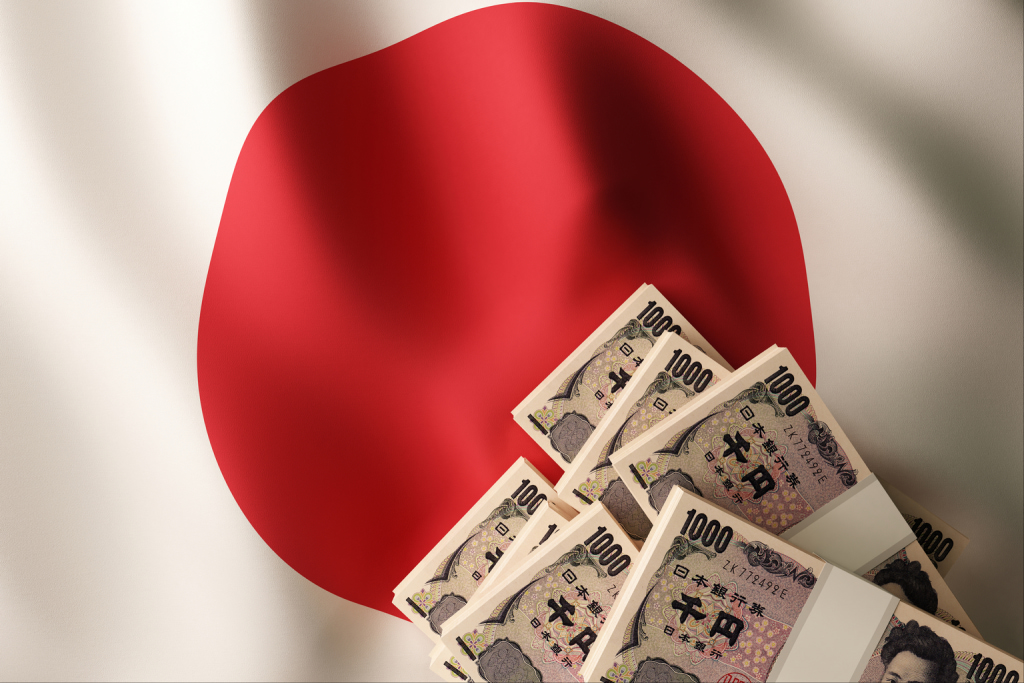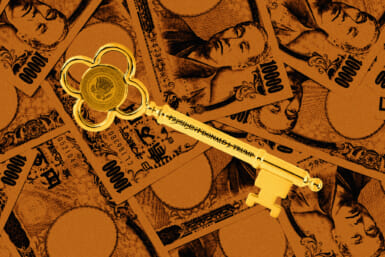It has been over eight months since the Covid-19 pandemic fully started to affect Japan, and by now, we don’t need to go through in detail about what widespread economic devastation it has brought both on Japan and the rest of the world. According to Japan’s latest data, a total of 651 businesses have gone bankrupt across the country from February until late October due to the pandemic, with most of those being in the food, hospitality and service sectors. Tokyo was hit the hardest, housing 142 of the 651. Over 2,000,000 people have lost their jobs for the same period. And while this is the officially released data, we can only imagine that there are many, many more businesses and people on the verge of a financial meltdown — including foreign residents who have made Japan their homes. With businesses shutting down, millions being laid off, and as the government tries to boost the hard suffering hospitality and tourism economies, it looks like it’ll be a while before we’re in the clear.
Fortunately, there are a few safety nets available for foreign residents living in Japan, but unfortunately, unless you have a propensity for reading dry documents written in complex kanji, it’s difficult to decipher what exactly you’re eligible for.
To help you get a grasp of it, we’ve put together an outline of the fundamental support you, as a taxpayer in Japan, are eligible to apply for.
Subsidy for Business Continuity (Jizokuka kyufukin, 持続化給付金)
What is it?: A subsidy of ¥1,000,000 for freelancers and ¥2,000,000 for small- and medium-sized enterprises (SME). The money is to be used for the continuation of operations and recovery. It’s a subsidy that doesn’t need to be paid back, but you will be required to pay tax on the money you receive.
Who is eligible: SME business owners and freelancers who are recognized as sole proprietors who can prove that since January 2020, they’ve lost at least 50% of their income compared to last year due to Covid-19 related matters. The payment is open to non-Japanese residents as well.
Freelancer details
If you’re a freelancer (with proof of sole proprietorship, which you should have as a freelancer), and you can prove that compared with the same month last year, then you should be able to apply. The application process is relatively straightforward and can be done online. Here’s a video explainer.
To apply, you will need:
- Last year’s tax return (stamped)
- Your bank book
- A form of valid Japanese ID
- An overview of your income from last year
If you don’t have a copy of your tax return, then you can pick up one from your local tax office. The final detail to submit is a monthly breakdown of last year’s and this year’s business income; you can ask for this from your employers, but also a running spreadsheet of your income (which you probably should have as a freelancer) is fine too. Typically the money is deposited into your bank within 2-3 weeks. Apply no later than January 15, 2021.
SME business owners
If you have a small-medium sized business in Japan and that as of April 1, 2020, you can fit within the following conditions, your company is eligible for up to ¥2,000,000 in support:
- Condition 1) The capital or contributions to the business are less than ¥1 billion. If not specified, the number of regular full-time employees must be 2,000 or less.
- Condition 2) Your business must have been generating income before 2019.
- Condition 3) You intend to continue your business in the future.
- Condition 4) Since January 2020, you have experienced months where your income decreased by 50% or more.
To apply, you must use the same application process site as the freelance payment but select “Small and medium-sized enterprises.” Additional forms may be required depending on the type of company you have, so it’s best to speak with your company accountant to ensure that you receive everything you’re eligible for. Apply no later than January 15, 2021.
For more details, see here (in Japanese).
Rent Subsidy for Businesses (Yachin Shien Kyufukin, 家賃支援給付金)
What is it?: A subsidy given to SME and sole proprietors facing a loss of business due to the pandemic. It’s focused on those who rent an office space, and the amount is determined based on the rent paid one month before the subsidy application date. Yachin shien kyufukin will cover two-thirds of your rent amount for up to six months. The payment cap is ¥6,000,000 for corporations and ¥3,000,000 for sole proprietors.
Who is eligible: To receive the payment, as of April 1, 2020, you must meet the following conditions:
- Condition 1) The capital or contributions to the business are less than ¥1 billion. If not specified, the number of regular full-time employees must be 2,000 or less.
- Condition 2) Your business must have been generating income before December 31, 2019.
- Condition 3) Between May 2020 and December 2020, your business must have suffered a decrease of 50% or more compared to the same month in 2019. Or, compared to the same time last year, total sales for three consecutive months decreased by 30%.
- Condition 4) You must be paying rent in exchange for directly occupying someone else’s land or building (in other words, if you own the land/ property you work on/ in, you cannot apply).
For more details, see here (in Japanese).
Welfare Fund Loans (Tokurei Kashitsuke, 特例貸付)
What is it?: An interest-free loan program. The money will have to be paid back. There are two types of loans – “Emergency Small Amount Fund” and “General Support Fund.”
Who is eligible: Households facing difficult financial circumstances due to decreased incomes due to Covid-19, and need either an urgent temporary loan to maintain their livelihood, or are suffering and need to receive the income to maintain their daily life.
Each prefecture’s Social Welfare Council is responsible for this loan and thus may have different eligibility requirements. To find out, contact your local municipality’s Social Welfare Council (shakai fukushi kyougikai, 社会福祉協議会). After consultation with the Municipal Social Welfare Council, the request will be sent to the prefecture’s Social Welfare Council. They will decide on the loan and payment. This is an example of the information provided by Ota City in Tokyo.
Emergency Small Amount Fund (Kinkyu koguchi shikin, 緊急小口資金)
Who it’s for: Households facing a decrease in income due to work loss due to Covid-19, and who require an urgent temporary loan to maintain their livelihood. A household is eligible if its income has decreased because of the pandemic, even if the working members have not lost their employment.
Amount: Special loans for sole proprietors: ¥200,000. Other cases: ¥100,000.
Repayment deadline: Within two years
Where to apply: Visit your Municipal Social Welfare Council. For more information, see here.
General Support Fund (Sougou Shien Shikin, 総合支援資金)
Who it’s for: Households who are suffering financially due to Covid-19-related unemployment or reduced income and who are in financial stress. A household is eligible if its income has decreased because of COVID, even if the working members have not lost their employment.
Amount: Single person: ¥150,000 per month. Two or more persons: ¥200,000 per month.
Loan period: Within three months in principle.
Repayment deadline: Within 10 years
Where to apply: Visit your Municipal Social Welfare Council. For more information, see here.
Additional Child Allowance Payment (Jido teate Rinji Tokubetsu Kyufukin, 児童手当 臨時特別給付金)
What is it?: An additional ¥10,000 per child added to the government’s child allowance payments (jido teate), paid to those raising children under the age of 15.
Who is eligible: Residents raising children between the ages of 0-15, and those who have applied for the child allowance payment. You can find details on how to apply and whether you’re eligible to receive payment here. If you have already applied for the regular child allowance payment with your local municipal government, you should be receiving the additional ¥10,000 already. The support will continue until the end of March 2021.
Housing Security Benefit (Jyukyo Kakuho Kyufukin, 住居確保給付金)
What is it?: A financial support system for those who may be at risk of losing their home due to the inability to pay rent. The benefit is part of Japan’s “Independence Support System for the Poor” (Seikatsu konkyusha jiritsy shienseido 生活困窮者自立支援制度). However, it is worth noting that when you sign a lease for the renting of your apartment, you would have (in most cases) assigned a guarantor person or company. If you cannot afford rent, they’re the first port of call for landlords and are legally required to pay your rent.
Who is eligible: Those who, since April 20, 2020, may lose their current housing due to income decrease due to having left a job or closed your business two years ago or less. Employees, business owners, and freelancers are all eligible. This benefit was implemented before Covid-19. However, following the widespread economic impacts of the pandemic, the application process has been simplified. Previously, applicants had to register with the Public Employment Security Offices (Hello Work) to apply for the benefit, but this is no longer the case. This is for renters only. Home loans are not covered.
Payment amount: Typically, funds cover three months of rent, but up to a maximum of nine months if conditions are met. Your municipal government will pay the rent directly to the landlord.
How to apply: You must visit your local self-reliance support centers. You’ll find the list of office addresses and contact details here (in Japanese). The payment amount you’re eligible will be decided upon meeting.
For more information, see here (in Japanese).
¥100,000 Stimulus (Tokubetsu Teigaku Kyufukin, 特別定額給付金)
What is it?: A cash (or bank deposit) payment of ¥100,000. It’s a stimulus payment, so it’s not a loan and doesn’t have to be paid back
Who is eligible: Anyone who is a registered resident in Japan as of April 27, 2020, both Japanese and foreign.
You probably know of this by now and have most likely received it. This stimulus payment was announced in the spring this year and did come with some additional controversy over whether foreign-born residents would be eligible. In the end, the government decided that those with residence cards (registered prior April 27, 2020) would be able to receive the money. To receive the money, residents can apply via online or mailing the form that should have arrived in the mail. Tokyo Weekender published an in-detail run down of the process in May.
Municipal governments manage the payment; there is a submission deadline of three months after accepting submissions. Different municipal governments opened submissions at different times, so to see whether your window might just still be open (if you haven’t already submitted), then check with your municipal ward office.
*Please note that this article doesn’t include a summary of the koyou hoken (雇用保険), Japan’s unemployment insurance, also known as shitsugyo hoken (失業保険). The insurance is available to anyone who has worked in Japan for six months and has made insurance payments (automatically deducted from one’s monthly salary). The scheme, run by the Japanese Ministry of Health, Labour and Welfare, helps recently unemployed people to support themselves until they find their next job. If you’d like to apply for unemployment insurance, you will have to provide written proof that you have lost your job. Then, you will need to go through Hello Work (in Japanese), the government organization that helps anybody in Japan find employment.
For more information on the types of support you can receive from the Japanese government, please refer to the Ministry of Economy, Trade and Industry’s website (in English). You can also reach out to the newly Foreign Residents Support Center for individual inquiries.









